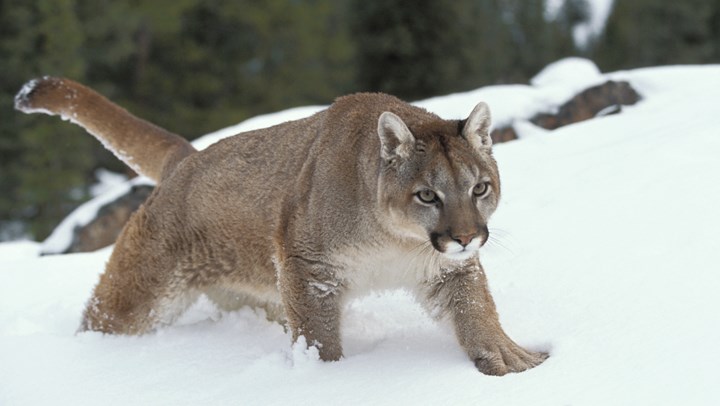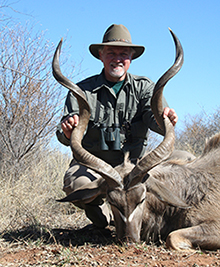
by Chris Chaffin - Thursday, February 13, 2020

The opportunity to hunt on public land, where so much game exists in quality habitat, is all part of our American hunting heritage. So drawing an either-sex tag in the elk-rich mountains of central Idaho was a good thing, a better-than-average opportunity to put venison in the freezer and maybe even run into a nice bull.
I was hunting near Stanley, Idaho, notoriously famous for being the national weatherman’s perennial “coldest spot in the country.” The pre-dawn morning in the high country gave testimony to its reputation. The below-zero temperature took my breath away when I stepped outside and hoped my truck’s diesel engine would start.
A 20-minute drive put me at the trailhead. I layered on the final outer insulation, double checked my pack for essentials, loaded my Browning BAR 7mm and set off up the trail. I was looking for an old logging road the map indicated would be about a half mile uphill. As this was new country to me, I waited until it was light enough to see so I could make out landmarks as I hiked into the area. There was a couple inches of new snow on the ground and I anticipated a great day of cutting some tracks and stalking a high-mountain elk.
I paused where the trail met the logging road and caught my breath. I laid out some branches in the shape of a small arrow in the intersection, pointing back toward my truck ... just in case.
The mountain was quiet, with only the soft crunch of boots on snow breaking the silence as I trudged further uphill, looking for tracks, movement or a good spot from which to watch the surrounding area. The peacefulness was like a blanket surrounding me. The early morning drop in temperature made me wish I had a blanket.
A half mile up the logging road a strange feeling settled over me. It was one of those feelings you can’t really explain but one that’s real, one that says, “Pay attention, dude.” It was a feeling that I was being watched."This interaction with nature was unexpected and, to be honest, somewhat uncomfortable but it added important lessons and a unique and exciting experience to my overall connection with nature."
Now on full alert, I stopped and slowly looked around, thoroughly searching the trees for movement and sound. The mountain was quiet. Nothing seemed out of place so after several minutes I moved on, slowly following the two-track, continually scanning the road, the trees, up ahead and off to the sides.
Morning passed uneventfully except for that nagging feeling that there might have been someone watching me. I couldn’t shake that feeling as I moved along the mountain.
The hours slipped by quickly and late morning had arrived. Elk were clearly not using this part of the mountain and it was time to head back down and make a plan for the afternoon. Even with the sun up, it was still surprisingly cold as I hiked back down the logging road, following my own foot prints in the snow. I moved slowly, still scanning the area for signs of game.
About a quarter mile from the junction with the trail, the uneasy feeling of being watched nudged my awareness again. It was more pronounced this time and demanded attention. Again, I stopped, moved over with my back to the mountain side of the road and scanned the area for anything suspicious. There was nothing. I kept going.
Just as the intersection with the trail came into view, I was suddenly aware there were now three sets of tracks in the snow: mine going uphill, mine coming downhill and, perfectly parallel to and only a foot off to one side of my uphill tracks, were big, round, fresh cougar tracks.
I shivered. I still don’t know if it was from the cold or from the realization that I was alone and a cougar had been following me up the mountain. At that spot, it appeared as though the cat had jumped or at least taken a long stride back into the woods. But as I continued downhill, I saw where the cat had come off the mountain, cut my tracks and then turned to follow me. His tracks laid next to mine for about half the time I was on the trail, then cut off after I was on the logging road. I didn’t have enough experience in tracking to determine if the cat tracks were made earlier in the morning or sometime later, but I clearly could see there was an occasional paw print inside the boot tracks I'd left that morning.
The remaining hike to my truck was made with one eye over my shoulder.
■ ■ ■
This interaction with nature was unexpected and, to be honest, somewhat uncomfortable but it added important lessons and a unique and exciting experience to my overall connection with nature. In wild lands, where many hunt big game, man is not always the top of the food chain. While we have firearms, we are still susceptible to the natural predator/prey relationship and to wildlife species' powerful instincts and ability to protect their young and their territory.
Hunting experiences teach us many important lessons that strengthen the bonds to our outdoor heritage. Those lessons include a respect for wildlife, its power and beauty and its instincts and ability to survive. We learn respect for wild places, where we are visitors. We learn humility in seeing that we are a part of nature, not the axis around which everything else revolves. We gain an understanding that we share wild lands and hunting opportunities with both animals and our fellow hunters. We embrace the responsibility to be prepared when we go afield. And, we learn from our experience outdoors and use that knowledge to become better stewards, passing along the lessons learned to the next generation of hunters.
All of this resonates harmonically as part of our hunting heritage.
Oh, and there is one other lesson: It gets cold enough in Stanley, Idaho, to literally freeze your brake drums in place. You will have to drive all the way back to town with one rear wheel frozen in place until the mechanic can unfreeze it with a torch!
■ ■ ■
About the Author
Chris Chaffin has been an outdoor communicator, educator and partnership manager for more than 40 years. He has worked on the national scene representing several prominent components of the outdoor community promoting hunting, fishing, the shooting sports and conservation. He served two terms as Treasurer for the Professional Outdoor Media Association (POMA), eventually taking on roles as vice-president, President and Chairman of the Board.

In 2007, he launched Chaffin Communications, Inc., a communications consulting company focusing on the outdoors. In 2012, with support from the Outdoor Adventure Dream Giveaway, Chaffin founded and currently manages the Outdoor Adventure Conservation Fund, a Florida non-profit established to encourage and facilitate more people participating in traditional outdoor activities. For more information, click here.
E-mail your comments/questions about this site to:
[email protected]
Proudly supported by The NRA Foundation and Friends of NRA fundraising.
